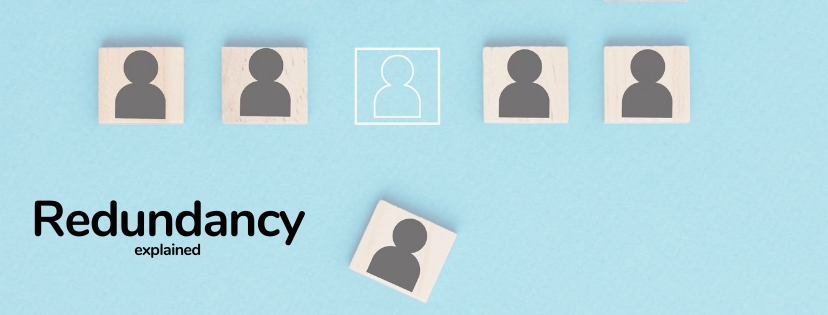If a Company Goes Bust Who Pays Redundancy? Legal Insights for UK Personnel
If a Company Goes Bust Who Pays Redundancy? Legal Insights for UK Personnel
Blog Article
Exploring the Interplay In Between Company Redundancy and Business Adaptability for Future Development
In the dynamic landscape these days's company globe, the elaborate partnership between firm redundancy and organizational flexibility emerges as an important factor for continual development and success. Business usually deal with the obstacle of striking a delicate balance in between maintaining a degree of redundancy to mitigate threats and fostering versatility to react swiftly to the ever-evolving market needs. This delicate interaction holds the key to not just enduring in rough times yet also prospering despite uncertainty. As we check out the complex dimensions of this interplay, fascinating insights into just how companies navigate these complexities to lead the way for future growth await.
Value of Company Redundancy
Company redundancy is an essential component that boosts business resilience and reduces operational dangers. By integrating redundancy steps within the organizational framework, business can better endure unanticipated interruptions and changes in the company atmosphere. Redundancy serves as a tactical buffer, allowing companies to adjust and react successfully to unforeseen difficulties without compromising important operations.
One key aspect of the significance of company redundancy is its role in making certain connection throughout times of crisis. When confronted with abrupt adjustments or emergency situations, redundant systems, resources, or employees can tip in to maintain crucial features and protect against prevalent interruptions. This connection not only safeguards the firm's track record and customer trust however also minimizes financial losses and functional downtime.

Strategies for Organizational Adaptability

Developing versatile organizational structures that permit for fast adjustments to market dynamics and consumer demands is crucial for remaining competitive in a rapidly advancing setting. By proactively determining potential disturbances and possibilities, companies can proactively grow and adapt in an ever-changing business landscape.
Harmonizing Redundancy and Versatility
Achieving an unified balance between functional redundancy and organizational adaptability is extremely important in navigating the complexities of a vibrant business setting. Redundancy within a business provides a safety and security internet, internet making certain connection and stability in procedures. Nevertheless, an unwanted of redundancy can cause ineffectiveness and hinder flexibility to altering market problems. On the other hand, business flexibility enables companies to respond without delay to outside disruptions and take new chances. Striking the right equilibrium between redundancy and adaptability is a fragile procedure that requires a deep understanding of the company's goals, market characteristics, and risk resistance.
To attain this equilibrium, firms require to conduct regular analyses of their procedures to recognize areas where redundancy is needed for danger reduction and where flexibility can drive technology and development. Applying adaptable frameworks, cultivating a society of constant discovering and enhancement, and motivating open communication across all degrees of the company are crucial methods to balance redundancy and adaptability properly. By aligning these 2 vital aspects, companies can place themselves for lasting growth and success in an ever-changing business landscape.
Instance Researches on Adaptation Success
In taking a look at circumstances of effective organizational adaptation, it comes to be evident that the interplay between operational redundancy and adaptability is a defining aspect in forming resistant companies. A DVD rental solution, Netflix showed remarkable versatility by transitioning right into a streaming system when digitalization interfered with the sector. These case studies underscore the importance of operational redundancy coupled with organizational versatility in promoting long-lasting development and competition.
Structure Durability for Future Growth
Building resilience for future development needs a tactical placement of operational processes with market characteristics and emerging fads. Business must adapt to altering environments by fostering a society of flexibility, advancement, and continual improvement.
Moreover, promoting strong connections with stakeholders, such as customers, staff members, distributors, and the area, is vital for keeping and weathering unpredictabilities depend on and assistance during stormy times. Efficient communication and transparency play an essential duty in building durability, as they help align expectations and assist in partnership in navigating unpredictabilities.
In addition, organizations require to focus helpful site on discovering and advancement campaigns to upskill workers and outfit them with the necessary devices to adjust to transforming scenarios. By investing in their workforce, companies can improve their versatility and dexterity, inevitably reinforcing their strength for lasting future growth.
Final Thought

In the dynamic landscape of today's organization globe, the detailed relationship in between business redundancy and business flexibility emerges as a crucial variable for continual development and success. Firms usually deal with the difficulty of striking a fragile equilibrium in between maintaining a degree of redundancy to minimize risks and promoting versatility to respond promptly to the ever-evolving market demands.To attain this equilibrium, business need to conduct regular analyses of their operations to recognize areas where redundancy is necessary for risk mitigation and where flexibility can drive development and development.In conclusion, the interplay in between business redundancy and organizational flexibility is critical for future growth. Structure resilience via a combination of redundancy and versatility will certainly ensure that business are prepared for the obstacles of the future.
Report this page